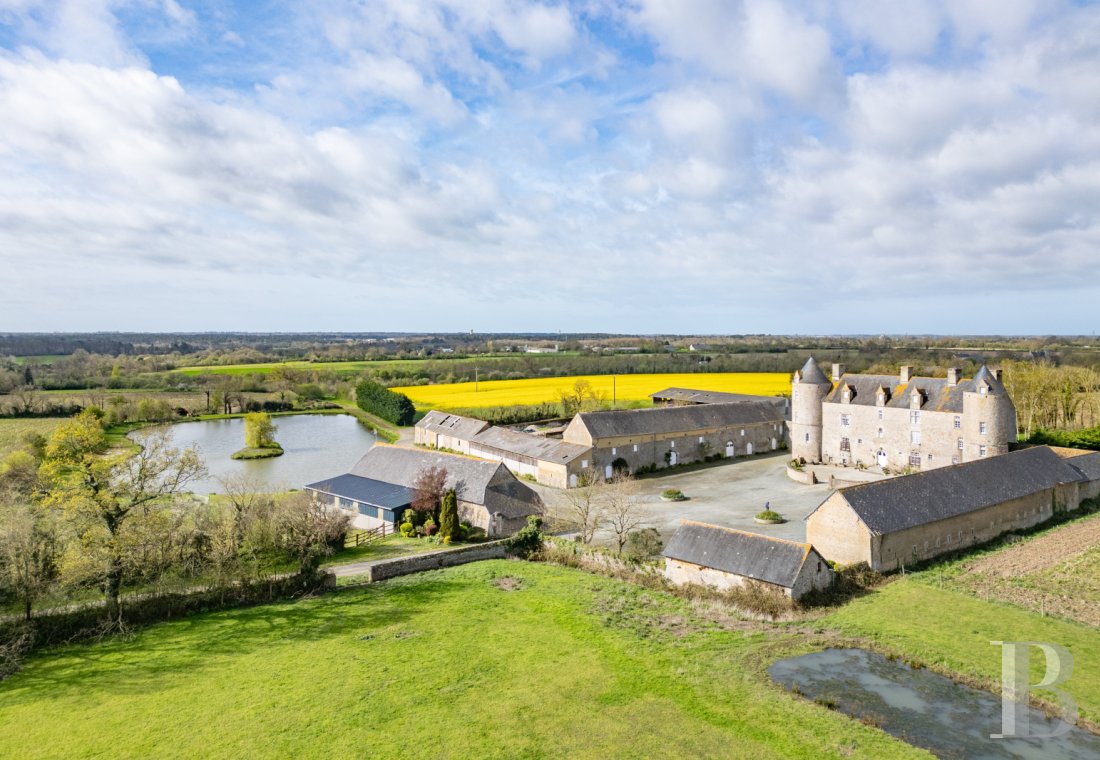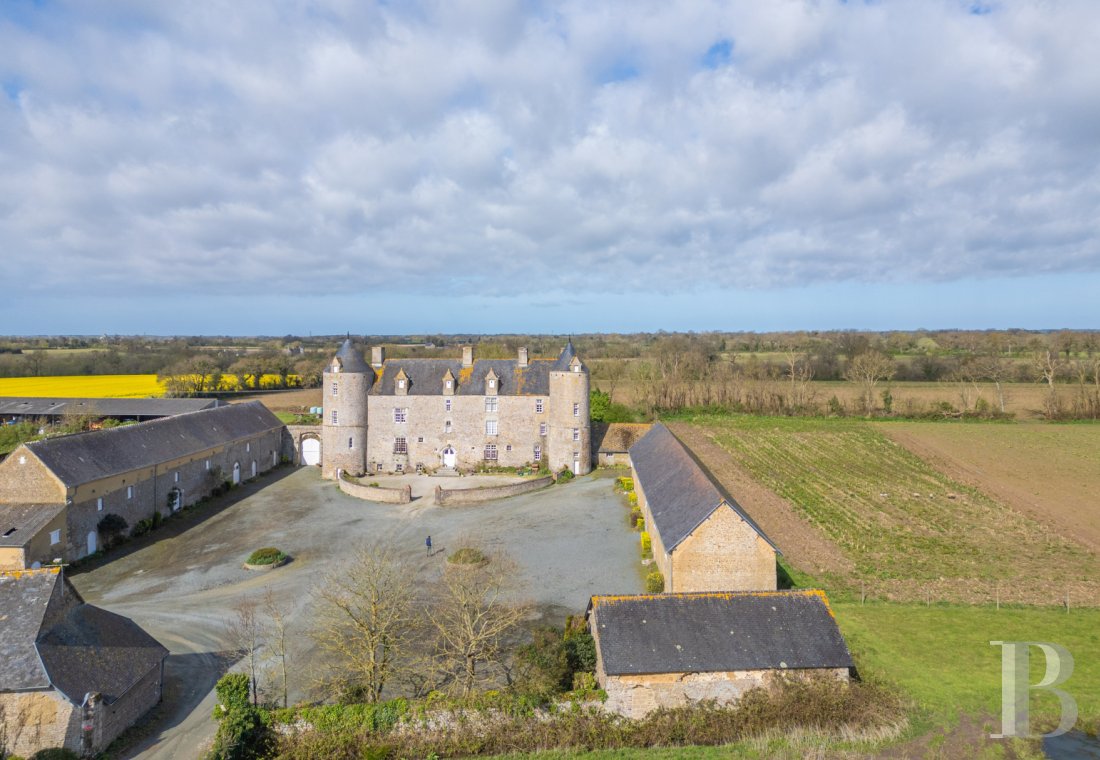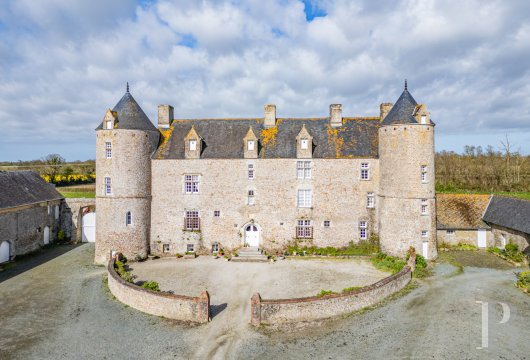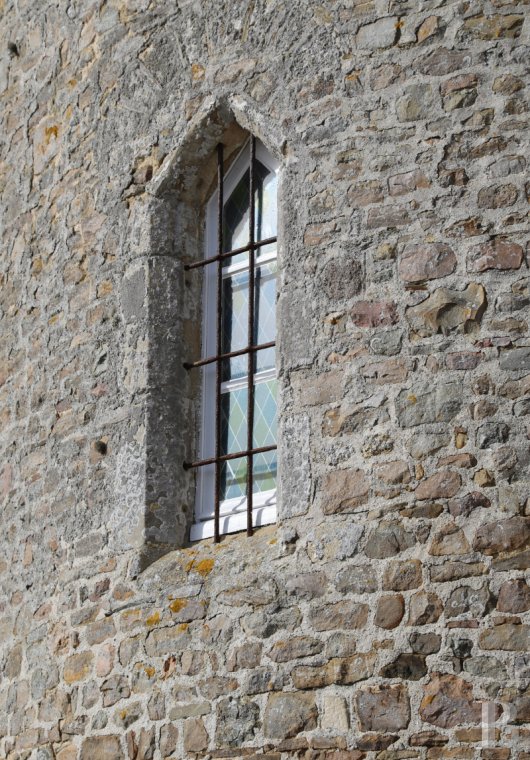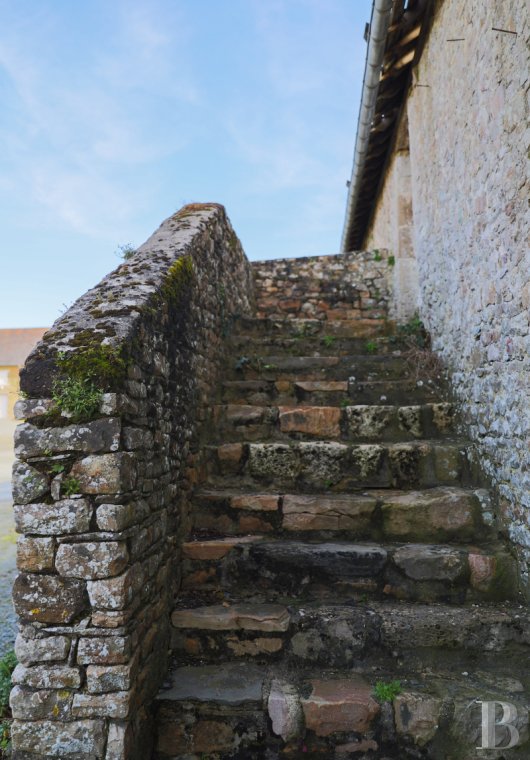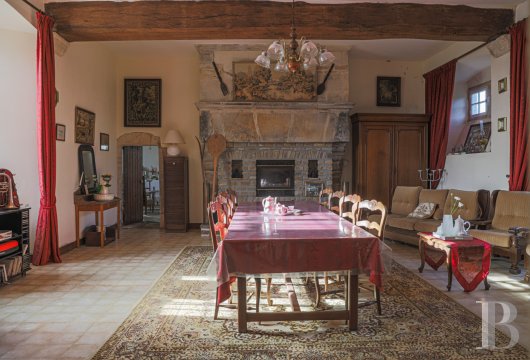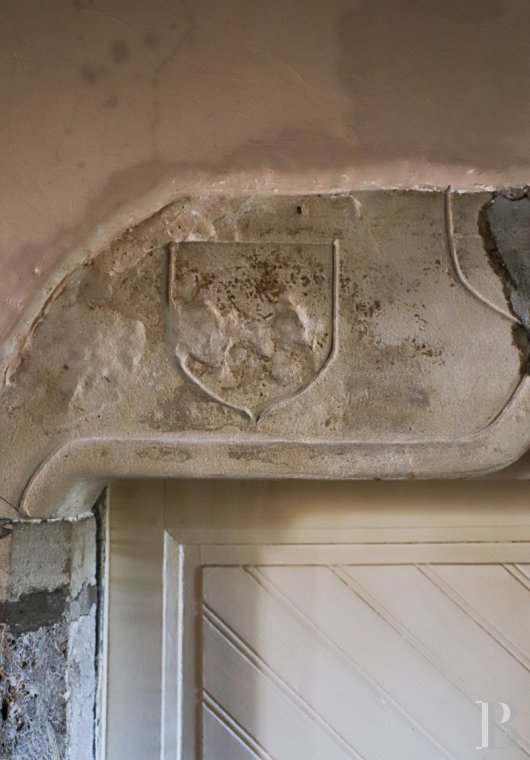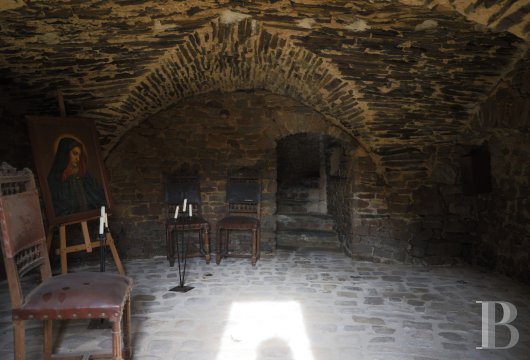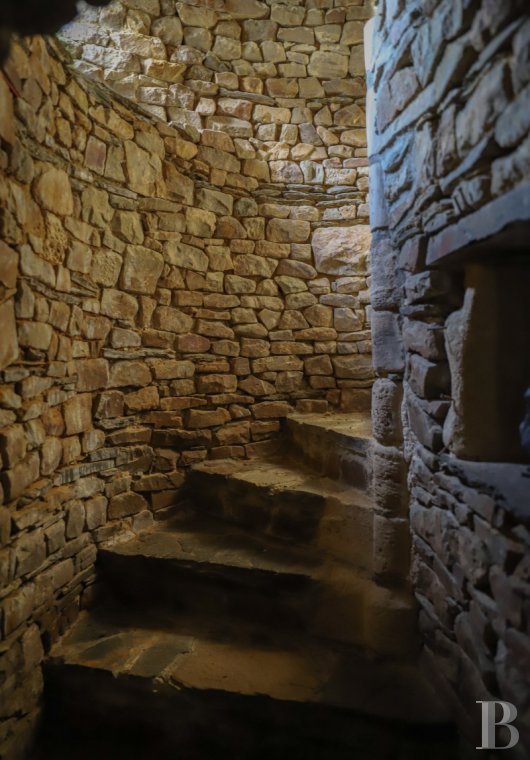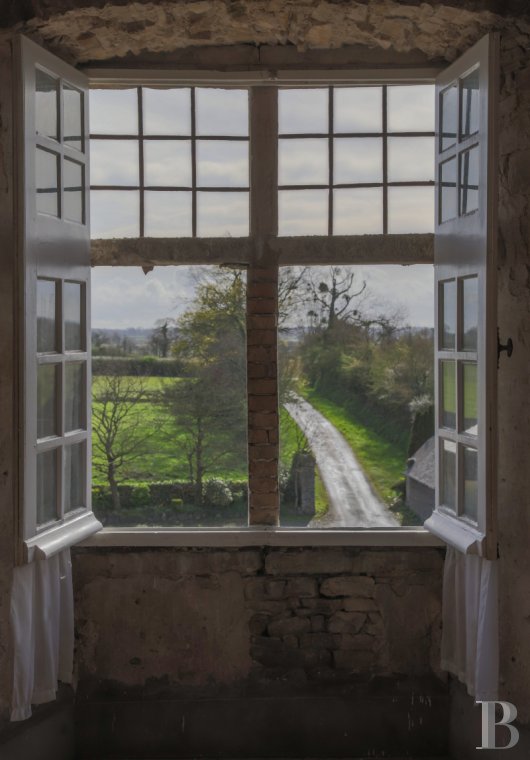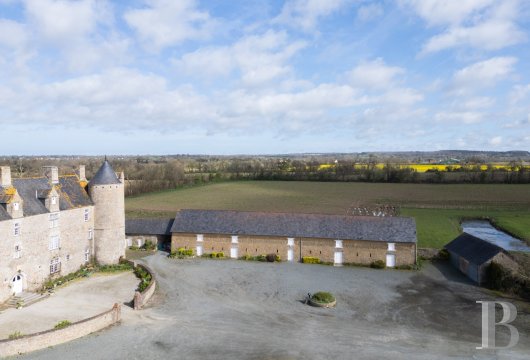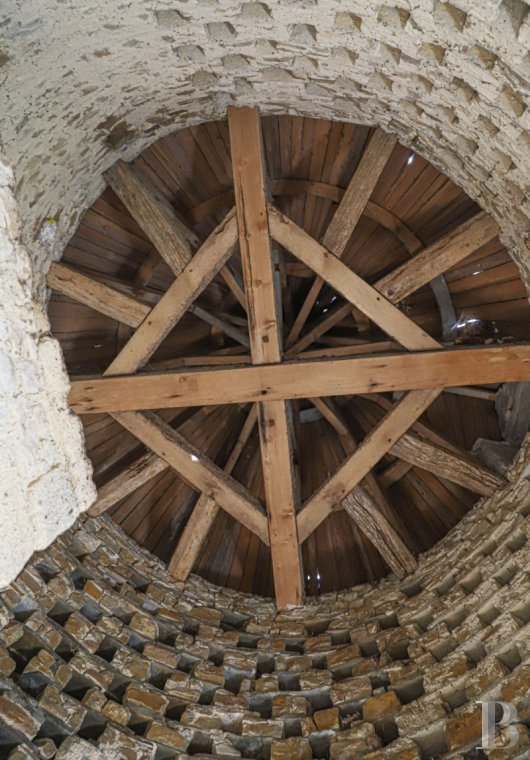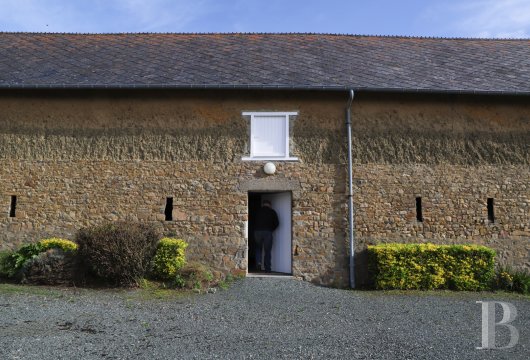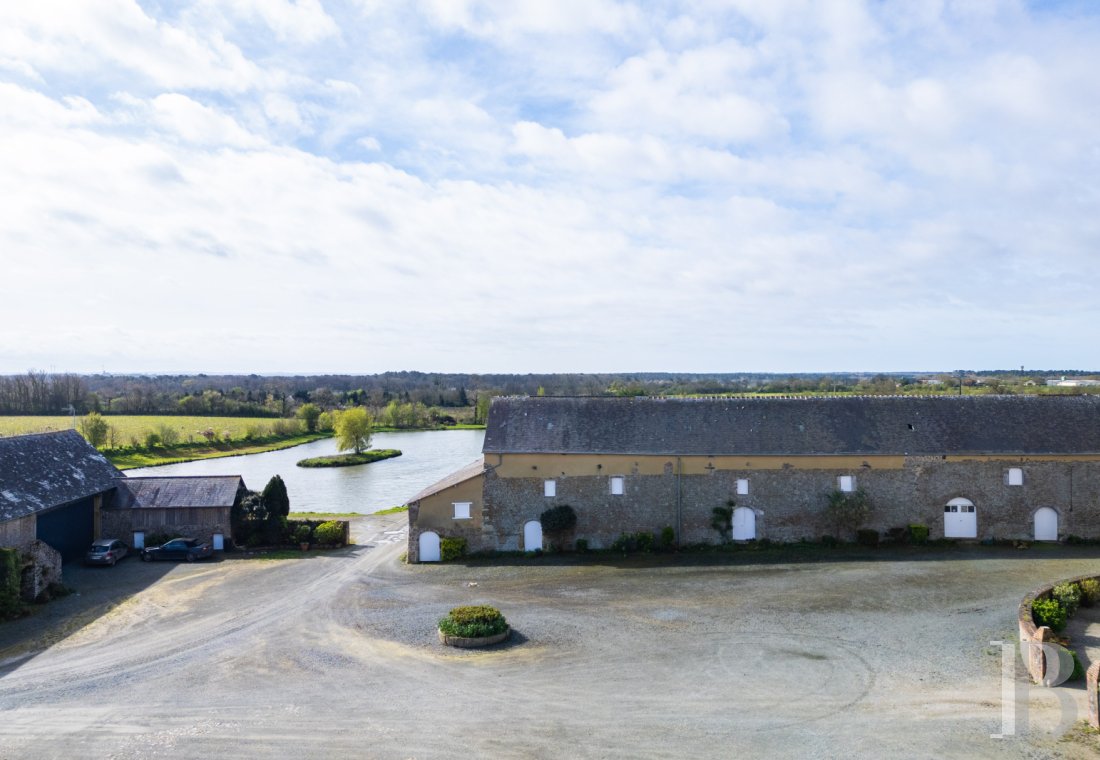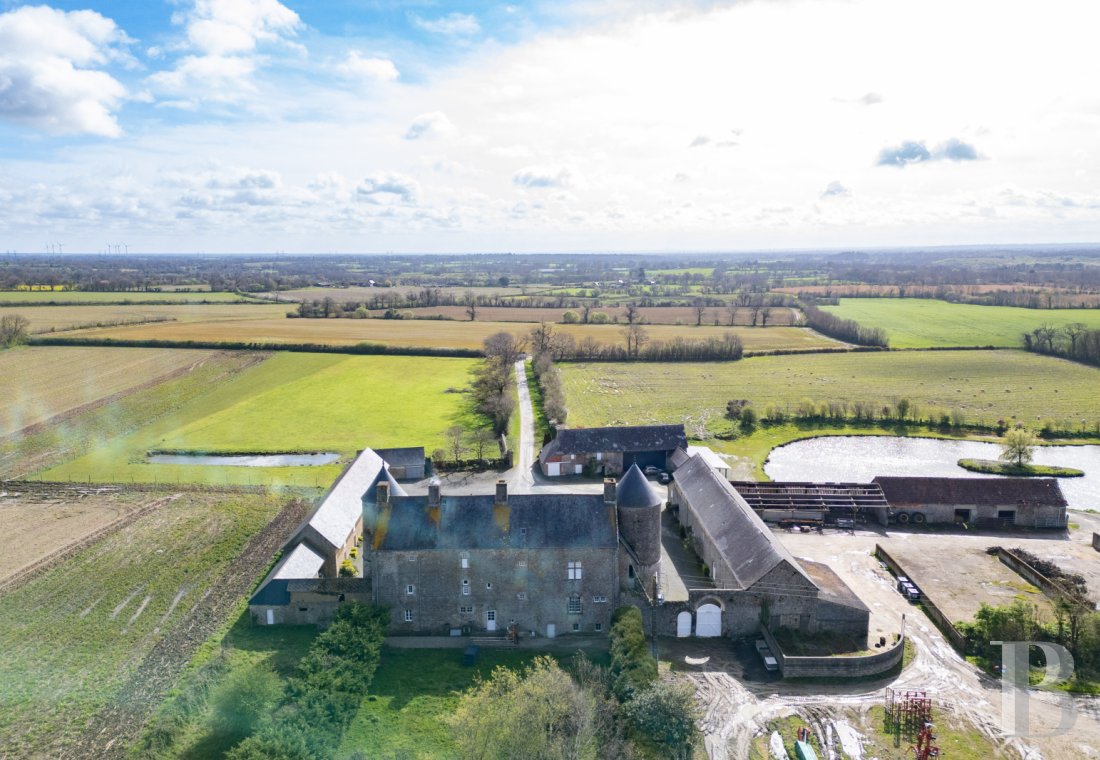10 hectares of grounds, 12 kilometres from the west coast of Normandy’s Cotentin peninsula

Location
The property is nestled in a bucolic backdrop that is characteristic of the local region: a patchwork of hedge-lined meadows crisscrossed with country lanes. Three towns lie a few kilometres from the property and offer shops and amenities. From the train station in Carentan-les-Marais, 25 kilometres away, you can reach Paris in three hours by rail.
Description
The manor
The manor faces east and west. It is an imposing building made of pale rubble stone. The edifice was built at the start of the 16th century. The rectangular main section is framed between two corner towers. One tower houses a dovecote and the other one houses a former chapel. Though the building is traditionally shaped, its bays and windows suggest an imaginative spirit with both vertical and horizontal asymmetry. Yet the whole structure is harmonious and elegant. Some of its decorative features date back to the edifice’s time of construction. For example, there are protective grates, stone-mullioned windows, dormers with large gable ends, and cone slate roofs. A low wall of rubble stone stands in front of the manor and runs in a broad semi-circle. It forms a pleasant separation with the courtyard.
The ground floor
A flight of front steps leads up to an arched entrance door. This double door stands in an archway of dressed stone. The entrance door takes you into a hallway that sets the tone for the rest of the manor’s interior: it has a French-style beamed ceiling, an ogee-arch lintel and a coat of arms. These decorative features can be seen in most of the manor’s rooms, as can many fireplaces, the majority of which are made of dressed stone with sculpted corbels, column-like jambs and hoods stretching up to the ceiling. There are three steps on one side of the hallway. At the same level as the hall, an arched opening leads into an extensive dual-aspect room with a monumental fireplace that houses a stove. A door takes you to the back of the manor. A second door leads to a spiral staircase that takes you to the different floors. Opposite, there is a separate lavatory, a kitchen and a scullery. On the other side of the hallway, a door leads to a second reception room. Its embellishments mirror those of the first one. Beyond it, in one of the towers, there is a former chapel with a spiral stone staircase. This staircase leads down to a crypt, which you can also reach from the courtyard. Its walls and vaulted ceiling are made of rubble schist.
The first floor
A spiral staircase leads up to the first floor. One corridor connects to two bedrooms and a walk-in wardrobe. A second corridor connects to a bathroom, a separate lavatory, a large bedroom and a smaller bedroom in one of the towers. The bedroom windows look out at the courtyard. From the spiral staircase, a few more steps take you to a vast dual-aspect room with a monumental fireplace, then a second bedroom in one of towers. These rooms need to be renovated. The remains of a stone fireplace can still be seen. Wood strip flooring extends across the rooms, which have French-style beamed ceilings.
The second floor
The spiral staircase leads up to two doors. One takes you to the loft. The other one takes you to an extensive room that is similar to the previous ones. It has a French-style beamed ceiling, wood strip flooring and a fireplace of dressed stone. A doorway with a dressed-stone surround and an ogee-arch lintel leads to two connecting rooms. The last one, which lies in one of the towers, houses a dovecote with many pigeonholes. The timber framing of the tower’s cone roof is exposed. All the rooms on this floor need to be restored.
The attic
You can easily reach the loft via stone steps. This space could be converted. Dormers fill it with natural light. Wood strip flooring extends across the loft and the roof frame is exposed. The door surrounds through which you go from one room to another are made of dressed stone. They are arched and have mouldings. In one of the towers, there is an earthen floor and the remains of a former fireplace can still be seen.
The outhouses
There is a collection of several outbuildings. Two long outbuildings face each other and edge the courtyard. Smaller buildings link them to the manor. Other annexes edge the end of the courtyard. Farm buildings lie beyond the courtyard. The whole series of buildings is listed as a historical monument. The oldest outbuilding is made of honey-toned local stone. Its gabled roof is covered with slate tiles and its loft space stretches from one end to the other. The building is divided into cow sheds, pig sheds and stables. A room has been converted for a bathroom to be installed in compliance with norms for people with reduced mobility. The second main outbuilding is not as old. It was also designed for animals, as well as harvests. Arched doors lead inside it. Its rectangular first-floor windows herald a great height up to the roof. The outbuildings that edge the end of the courtyard serve as workshops, storerooms and garages. Behind one of the large, long outhouses, there are several buildings made of rubble stone or cladded with timber. They have metal roofs. These agricultural buildings are only used for running the farm.
The lake and grounds
Beyond the courtyard, on the side where the farm buildings lie, there is a lake. It covers around one hectare and it is roughly 3.5 metres deep. Three springs fill it with water. One of these springs is under the manor, providing water via a well in a cellar. The water level of this lake remains remarkably stable, whatever the level of rainfall. The grounds extend around the manor. They include a grassy plot surrounded by tall trees behind the manor’s west-facing rear elevation.
Our opinion
Time stands still on this vast estate tucked away among the Cotentin peninsula’s hedge-lined meadows where a bracing sea air envelops you. Several centuries of history echo in the enchanting atmosphere of this remarkable property. Countless decorative features in all the rooms date back to the edifice’s period of construction. Each stone lintel is sculpted, some simply and others finely. The generous volumes and variety of the outbuildings open up a wide range of possibilities for development. Indeed, this unique property is a starting point for ambitious restoration.
1 383 000 €
Fees at the Vendor’s expense
Reference 772274
| Land registry surface area | 10 ha 34 a 55 ca |
| Main building floor area | 350 m² |
| Number of bedrooms | 4 |
| Outbuildings floor area | 500 m² |
| including refurbished area | 100 m² |
NB: The above information is not only the result of our visit to the property; it is also based on information provided by the current owner. It is by no means comprehensive or strictly accurate especially where surface areas and construction dates are concerned. We cannot, therefore, be held liable for any misrepresentation.

